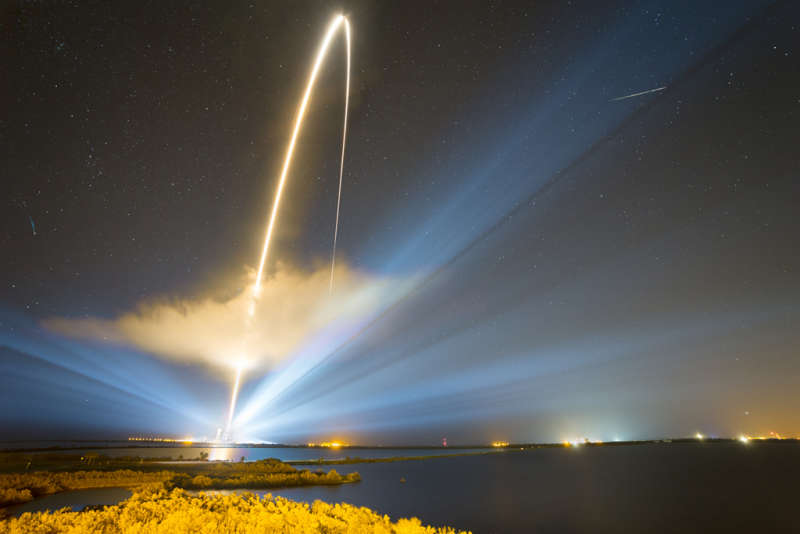Credit & Copyright: Derek Demeter
(Emil
Buehler Planetarium)
Explanation:
The brief flash of a bright Perseid meteor streaks across the
upper right in this composited series of exposures
made early Sunday morning near the peak of the annual
Perseid meteor shower.
Set
up about two miles from Space Launch Complex 37 at Cape
Canaveral Air Force Station, the photographer also captured the
four minute long trail of a Delta IV Heavy rocket carrying the
Parker
Solar Probe into the dark morning sky.
Perseid meteors aren't slow.
The grains of dust
from periodic comet Swift-Tuttle vaporize as they
plow through Earth's upper atmosphere at about
60 kilometers per second (133,000 mph).
On its way
to seven gravity-assist flybys of Venus
over its seven year mission, the Parker Solar Probe's closest
approach to the Sun will steadily decrease,
finally reaching a distance of 6.1 million kilometers
(3.8 million miles).
That's about 1/8 the distance between Mercury and the Sun,
and within the solar corona,
the Sun's tenuous outer atmosphere.
By then it will be traveling roughly 190 kilometers per second
(430,000 mph) with respect to the Sun, a record for fastest spacecraft
from planet Earth.
1999 2000 2001 2002 2003 2004 2005 2006 2007 2008 2009 2010 2011 2012 2013 2014 2015 2016 2017 2018 2019 2020 2021 2022 2023 2024 2025 |
Yanvar' Fevral' Mart Aprel' Mai Iyun' Iyul' Avgust Sentyabr' Oktyabr' Noyabr' Dekabr' |
NASA Web Site Statements, Warnings, and Disclaimers
NASA Official: Jay Norris. Specific rights apply.
A service of: LHEA at NASA / GSFC
& Michigan Tech. U.
|
Publikacii s klyuchevymi slovami:
Perseids - Perseidy
Publikacii so slovami: Perseids - Perseidy | |
Sm. takzhe:
Vse publikacii na tu zhe temu >> | |
